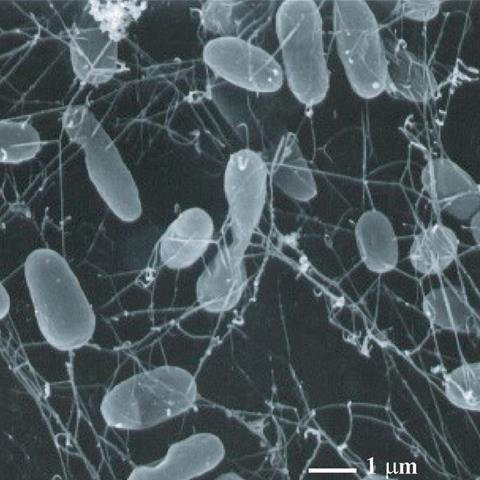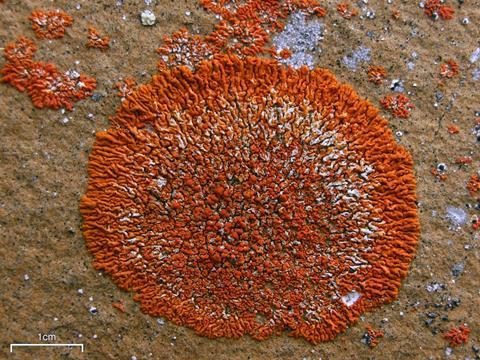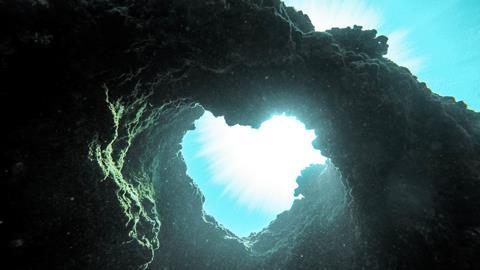Extremophiles are organisms which survive in extreme conditions. They are adapted to survive in niche environments, including pressure, alkalinity, acidity and temperature. From the deep pressures of the oceans to the heat of hydrothermal vents, the sea offers a variety of unique environments, which would be lethal habitats for other organisms.
The different classes of extremophiles each have unique biological adaptations which are advantageous to their survival in extreme marine environments.
Thermophiles
Thermophiles thrive in extreme heat. Their ability to survive is driven by stable, adapted enzymes that function at high temperatures between 60-122°C, which most other organisms could not handle. Pyrolobus fumarii can be found in a variety of locations, including hydrothermal vents and acidic thermal springs. These organisms are able to survive above boiling point at 113°C due to their adapted enzymes and DNA, allowing metabolic processes to continue without inhibition from extreme heat

Acidophiles
These organisms are able to withstand extremely an low pH of 3 or less. Surviving in environments such as marine volcanic vents and acidic sulfur springs, their adaptations include proton pumps, which helps bacterial cells maintain a near-neutral cytoplasm. Cyanidium caldarium thrives in hot acidic springs, showcasing its dual adaptations to thrive in complex, extreme environments, equipped to establish itself in high temperatures and acidic environments such as the geysers at Yellowstone National Park.
Halophiles
Halophiles are adapted to survive in high salinity (>0.3M NaCl). They survive through the ability to maintain osmotic balance in the presence of high salt concentrations in the environment. The Dead Sea harbours a myriad of organisms which can survive in a hypersaline environment; these include Chromohalobacter, Halomonas and Salibacillus, surviving in over 34% salinity.

Alkaliphiles
Alkaliphiles can survive the opposite end of the pH scale to Acidophiles, living in pH environments over nine. Again, these organisms have adapted to maintain a neutral pH of the cytoplasm to survive through proton pumps, which actively pump H+ across the membrane. Rift Valley Lakes of East Africa are a group of Soda lakes that offer a unique alkaline niche for organisms like Arthrospira fusiformis.
Psychrophiles
Psychrophiles such as Colwellia psychrerythraea and Planococcus halocryophilus exist in extremely cold habitats below 15°C. In the coldest regions, these organisms survive in small channels of water known as ice veins. Cryosphere survival is aided by molecular adaptations to their enzymes to allow them to work optimally at low temperatures, called cold-active enzymes.

Barophiles and Piezophiles
Piezophiles or barophiles such as Pyrococcus horikoshii are organisms which are able to establish themselves and live in high-pressure environments (up to 110MPa). These organisms have cell stability at high pressures, which can also be in conjunction with withstanding cold temperatures found in the depths of the ocean or extremely hot temperatures around hydrothermal vents. Their adaptations include improving cell stability to withstand the external pressures from the ocean.
The biological adaptations of organisms to survive in these environmental niches have been harnessed by biotechnology companies to improve industrial processes. Below are a few examples of how extremophiles have been used to benefit industry:
1. Harnessing thermophilic polymerases from Thermus aquaticus. These enzymes have been utilised to amplify DNA fragments in PCR due to their stability at high temperatures.
2. Acid-stable enzymes are utilised throughout the food industry: α-amylase from A. acidocaldarius is an acid-stable protein which has the potential to be used in the starch industry where native starch slurry has a pH of ~4, thereby removing the need to neutralise the process with alkaline supplements.
3. Bioleaching methods have also benefited from using acidophiles such as Acidithiobacillus spp. by removing sulphides and oxides from metals. Bioleaching provides a safer alternative to mining using traditional heap leaching methods with cyanide.
With enhanced microbial research through recent developments in genomics and genetics, the exploration of marine extremophiles is easier than ever before. Today, researchers have models for all extremophiles, which allows for better study of organisms, and how they adapt to survive and thrive in inhospitable environments. As seen by the examples above, understanding extremophile genetic nuances could be key to optimising industrial biological processes. In addition, further study can also provide a better understanding of the function of extreme environments, an ecosystem where life is pushed to its limits.








No comments yet